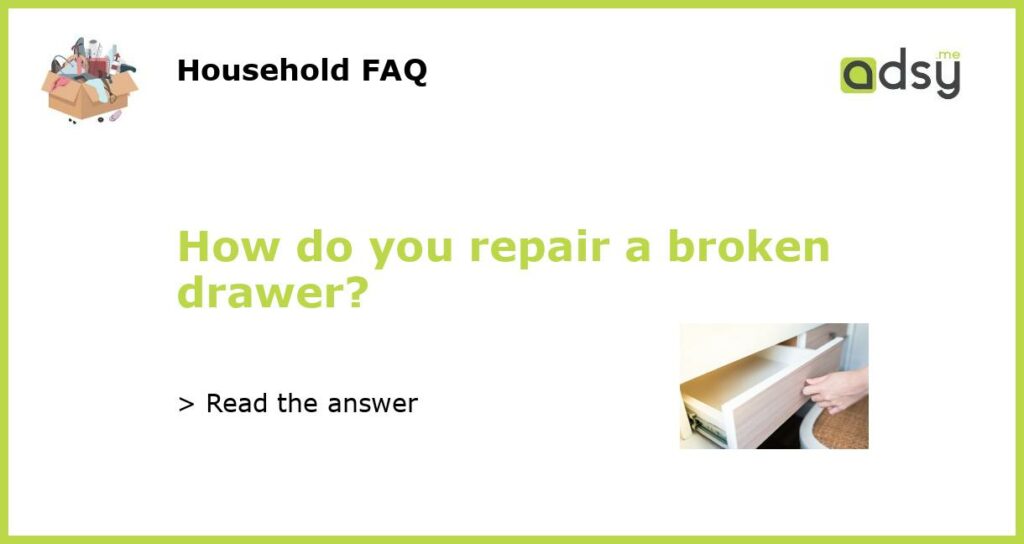Assess the damage and gather necessary tools
If you have a broken drawer, the first step is to assess the damage and determine the best course of action. Start by examining the drawer and identifying what exactly is broken. Is it a loose or broken joint? Or is it a damaged drawer slide? Once you have identified the problem, gather the necessary tools to repair it. This may include a screwdriver, hammer, wood glue, clamps, and replacement parts if needed.
Fix loose or broken joints
If the problem with your drawer is a loose or broken joint, you will need to fix it by reinforcing the joint. Start by removing the drawer from the cabinet and disassembling the joint. Clean the joint and apply wood glue to the broken parts. Then, reassemble the joint and use clamps to hold it in place while the glue dries. Once the glue is dry, you can reinforce the joint further by driving in screws or adding additional brackets for extra support.
Repair or replace damaged drawer slides
If the issue with your drawer is a damaged or broken drawer slide, you will need to repair or replace it. Start by removing the drawer and inspecting the slides for damage. If the slides are just loose, you can tighten them with a screwdriver. If they are damaged beyond repair, you will need to replace them. Measure the length and width of the existing slides and purchase replacement slides that match the dimensions. Remove the old slides and install the new ones according to the manufacturer’s instructions. Make sure to test the new slides to ensure they are properly aligned and functioning smoothly.
Reinforce weak or damaged drawer bottoms
If your drawer has a weak or damaged bottom, you will need to reinforce it to prevent any further damage. Start by removing the drawer from the cabinet and emptying its contents. If the bottom is just loose, you can fix it by applying wood glue to the joints and clamping them together until the glue dries. If the bottom is damaged or has a large hole, you may need to replace it entirely. Measure the dimensions of the existing bottom and cut a new piece of wood to fit. Glue or nail the new bottom into place and allow it to dry before reassembling the drawer.
Finishing touches and preventative measures
Once you have repaired the broken drawer, you can add some finishing touches to ensure it is both functional and aesthetically pleasing. Sand down any rough edges or uneven surfaces and apply a coat of paint or varnish if desired. Before reinstalling the drawer, take some preventative measures to avoid future damage. Use drawer liners or organizers to minimize friction and prevent wear and tear. Regularly inspect and maintain your drawers to catch any issues early on and prevent them from becoming major problems.






